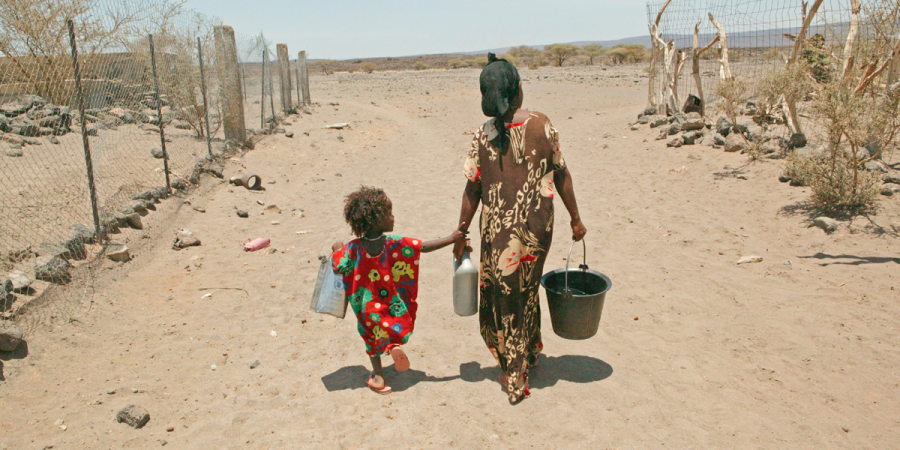Local organisations such as National Red Cross and Red Crescent Societies and national NGOs are among the first responders to disasters and outbreaks of violence. Kenya Red Cross, for example, was in the forefront of providing assistance to those critically injured in the al-Shabab attack on Nairobi’s Westgate Mall in September 2013, and provided medical evacuations and psychosocial support to the survivors of the Garissa University attack earlier this year. Coming from among the affected population, local organisations provide built-in opportunities for humanitarian action that is not only timely but also highly relevant to the priorities of those affected. Local actors are there before, during and after the crisis and so can help foster coherence between humanitarian action and sustainable development. They are also there to respond to the smaller disasters that don’t make the international headlines. Working with their counterparts in government, many of which now have increasingly professionalized disaster management bodies, local organisations can form part of nationally-led efforts to manage the risk and impact of disasters. For example, Kenya Red Cross works closely with the National Drought Management Authority to translate hazard early warning indicators into early response activities at the community level.While the role of local organisations has long been recognized in the major UN General Assembly Resolution on humanitarian assistance, the Code of Conduct for the Red Crescent Movement and NGOs in Disaster Relief and the principles of Good Humanitarian Donorship, donors and international agencies have been slow in taking steps to make this rhetoric a reality.
A new paper from the Humanitarian Policy Group, commissioned by the British Red Cross and the International Federation of Red Cross and Red Crescent Societies, argues that national and local actors have been kept at arm’s length by the international humanitarian community. National NGOs, for instance, receive only a tiny portion – estimated at 1.2 per cent – of international humanitarian funding. Local organisations have immense potential to help meet the needs of people affected by conflict and disasters. This is immediately clear when looking at some of the most high-profile crises of the last year. The work of the National Red Cross Societies of Guinea, Liberia and Sierra Leone, facilitating safe and dignified burials for victims, has been critical in bringing Ebola under control in West Africa. Whilst, amidst extreme insecurity, the volunteers of the Syrian Arab Red Crescent have played a leading role in responding to the needs of those affected by the conflict. This is not to suggest that international humanitarian agencies do not have a crucial role to play. Local, national and international actors each offer comparative advantages that apply to varying extents in different contexts and crises. Indeed, better meeting the needs of those affected by humanitarian crises may be more a question of collaborative advantage – the gains of working effectively in partnership – than competition over who is best placed to deliver assistance. A more inclusive and complementary approach to the funding and delivery of humanitarian aid, however, brings with it a number of challenges that will have to be grappled with in the run up to the World Humanitarian Summit.
First, with humanitarian funding growing by over 1,000 per cent in the last 14 years, donors are keen to write bigger cheques to a smaller number of large agencies. Honest conversations and innovative thinking are needed on how to overcome this understandable risk-aversion, paving the way for gradual increases in direct funding for national and local actors, and helping to avoid wasteful subcontracting arrangements. To be sustainable, however, local organisations also need to raise funds locally. The Kenyans for Kenya initiative, which brought in over USD 8.5m in response to the 2011 drought emergency, is an example ripe for replication. Second, the increasing shift to local organisations in challenging environments from Syria to West Africa, can, at times, expose staff and volunteers to unmitigated risk. Support for strengthening safety and security management among local actors should therefore be a matter of urgency. Finally, greater emphasis on the merits of local organisations should not be seen to undermine the mandate and work of international actors. The presence and proximity of international agencies to affected populations remains critical to their protection and to effective assistance, particularly in today’s most sensitive conflict situations.
Responsibility for building a common way forward on these challenges lies with all of us involved – the international community, affected states and local organisations.
N.B. This blog has been written by Dr. James Kisia and Mr. Samuel Carpenter, Policy Adviser at British Red Cross and a member of the World Humanitarian Summit Reducing Vulnerability and Managing Risk Thematic Team.


Comments